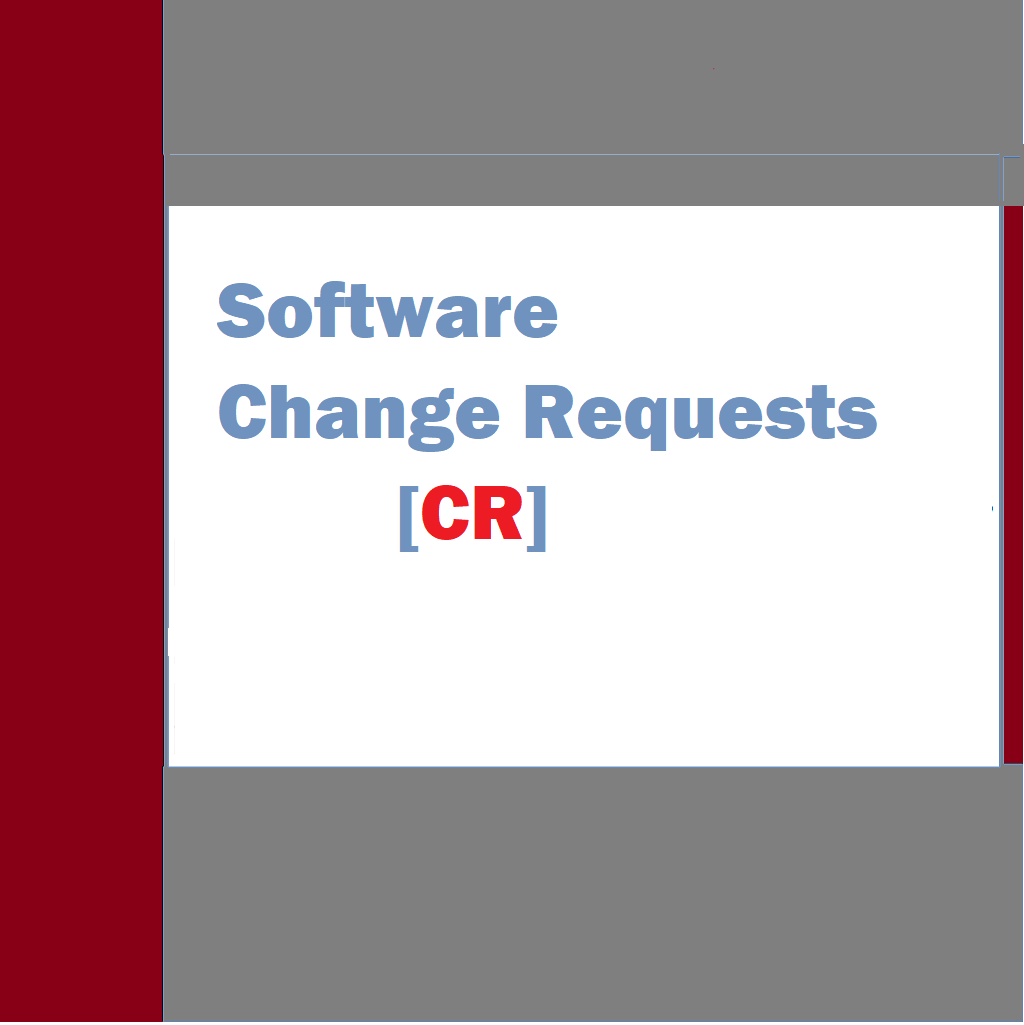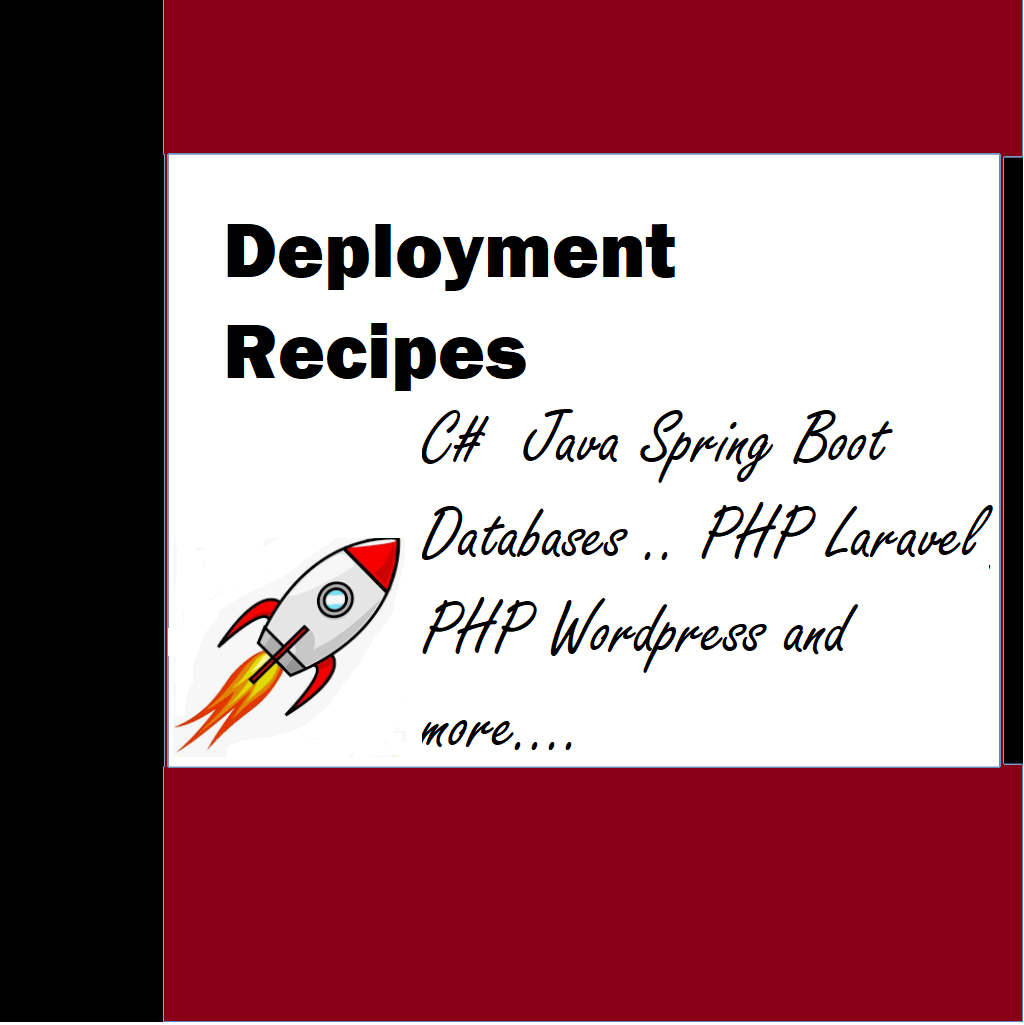Fine, I am working on a project and two months down the line and just before the delivery the client comes to you and puts in a new change request. It’s a familiar situation and most of us have been through one. What would you do? How would you handle it?
In software projects, a change request refers to a formal process through which modifications or alterations are proposed to an existing software system. Change requests typically arise when there is a need to enhance functionality, fix bugs, adapt to evolving requirements, or address unforeseen issues during the development or maintenance phase of the project. These requests are vital for ensuring that the software aligns with the evolving needs of its users and the overall project objectives. Change requests typically include detailed information about the proposed changes, such as the rationale behind them, impact analysis, estimated effort, and potential risks. Once a change request is submitted, it undergoes a thorough evaluation by the project stakeholders, including the development team, project managers, and clients, to assess its feasibility, impact on the project timeline, and overall value. The decision to approve or reject a change request is made based on these evaluations, ensuring that changes are effectively managed while maintaining project stability and aligning with the agreed-upon objectives. Change requests play a crucial role in maintaining the adaptability and quality of software projects throughout their lifecycle.
Handling change requests
Handling change request is a systematic process. Change requests in software projects involves a systematic and collaborative approach to ensure that the proposed changes are properly evaluated, managed, and implemented. Here are the steps typically followed in handling change requests:
1. Submission: Change requests are typically submitted by stakeholders, such as clients, users, or project team members. They should provide clear and detailed information about the proposed changes, including the desired functionality, rationale, and any relevant documentation or supporting materials.
2. Documentation: The change request is documented, including its description, impact analysis, estimated effort, and potential risks. This documentation helps in assessing the feasibility and impact of the proposed changes on the project.
3. Evaluation: The change request undergoes a thorough evaluation by relevant stakeholders, including project managers, developers, and quality assurance teams. They assess the feasibility, impact, and potential risks associated with the proposed changes. This evaluation helps in determining the implications on the project’s timeline, resources, and overall goals.
4. Prioritization: Change requests are prioritized based on factors such as their impact on project goals, urgency, complexity, and resource availability. This step ensures that high-priority changes are addressed promptly while considering the project’s constraints and objectives.
5. Approval/Rejection: The decision to approve or reject a change request is made based on the evaluation and prioritization. Stakeholders review the information and decide whether the proposed changes align with project objectives, fit within the project’s scope, and can be accommodated within the available resources.
6. Communication: Once a decision is made, stakeholders are informed about the outcome of the change request. Clear and transparent communication is crucial to keep all parties informed about the status of the request and any subsequent actions.
7. Implementation: If a change request is approved, it moves into the implementation phase. The development team works on incorporating the changes into the software, following the established development processes and practices. The changes may go through additional testing and quality assurance procedures before being deployed.
8. Documentation and Tracking: Throughout the process, it is important to maintain proper documentation of the change request, its approval status, implementation details, and any adjustments made. This documentation helps in tracking the changes, ensuring accountability, and providing a historical record for future reference.
By following these steps, software projects can effectively handle change requests, ensuring that modifications are evaluated, managed, and implemented in a controlled and structured manner. This approach helps in maintaining project stability, meeting user needs, and achieving project success.
Parts of a good change request document
A change request document typically includes several key parts to provide comprehensive information about the proposed changes. Here is a generic and suggested format for the different parts of a change request document:
1. Header:
– Change Request Title/ID: A unique identifier or title for the change request.
– Date: The date when the change request was submitted.
– Requested By: Name and contact information of the person or entity submitting the change request.
2. Introduction:
– Background: A brief overview of the current state of the software system and the need for the proposed changes.
– Objective: The specific goal or purpose of the requested changes.
– Rationale: The reasons and justifications behind the proposed changes, including any identified issues, user feedback, or evolving requirements.
3. Scope:
– Description: Detailed explanation of the requested changes, including the specific functionalities, features, or enhancements to be added, modified, or removed.
– Impact Analysis: Assessment of the potential impact of the proposed changes on various aspects such as the existing system, project timeline, resources, stakeholders, and overall project objectives.
4. Requirements:
– Functional Requirements: Clear and detailed description of the desired functionality or behavior resulting from the proposed changes.
– Non-functional Requirements: Any additional requirements related to performance, security, usability, scalability, or other aspects that need to be considered.
5. Effort Estimation:
– Development Effort: An estimate of the time and resources required to implement the proposed changes.
– Testing Effort: The effort required to thoroughly test and validate the changes to ensure their correctness and compatibility.
6. Risks and Mitigation:
– Potential Risks: Identification and assessment of potential risks associated with the proposed changes, such as technical challenges, compatibility issues, or impacts on other system components.
– Mitigation Strategies: Proposed strategies or actions to mitigate or address the identified risks effectively.
7. Approval:
– Decision Maker(s): The name(s) of the person(s) responsible for approving or rejecting the change request.
– Approval Criteria: The criteria or factors considered in the decision-making process, such as alignment with project objectives, feasibility, resources, and impact analysis.
8. Supporting Materials:
– Attachments: Any relevant supporting documents, such as diagrams, mockups, user feedback, or technical specifications, that provide additional context or details about the proposed changes.
9. Signature and Date:
– Requestor’s Signature: Signature of the person submitting the change request.
– Date: The date when the change request document is finalized and submitted for evaluation.
A software project managers perspective –
A software change request document typically follows a structured format to effectively communicate the details of the proposed changes. Here is a suggested format for the different sections of a software change request document:
1. Header:
– Change Request Title/ID: A unique identifier or title for the change request.
– Date: The date when the change request was submitted.
– Requested By: Name and contact information of the person or entity submitting the change request.
– Project Name/ID: The name or identifier of the software project to which the change request applies.
2. Introduction:
– Background: A brief overview of the current state of the software system and the need for the proposed changes.
– Objective: The specific goal or purpose of the requested changes.
– Rationale: The reasons and justifications behind the proposed changes, including any identified issues, user feedback, or evolving requirements.
3. Scope:
– Description: Detailed explanation of the requested changes, including the specific functionalities, features, or enhancements to be added, modified, or removed.
– Impact Analysis: Assessment of the potential impact of the proposed changes on various aspects such as the existing system, project timeline, resources, stakeholders, and overall project objectives.
4. Requirements:
– Functional Requirements: Clear and detailed description of the desired functionality or behavior resulting from the proposed changes.
– Non-functional Requirements: Any additional requirements related to performance, security, usability, scalability, or other aspects that need to be considered.
5. Effort Estimation:
– Development Effort: An estimate of the time and resources required to implement the proposed changes.
– Testing Effort: The effort required to thoroughly test and validate the changes to ensure their correctness and compatibility.
6. Risks and Mitigation:
– Potential Risks: Identification and assessment of potential risks associated with the proposed changes, such as technical challenges, compatibility issues, or impacts on other system components.
– Mitigation Strategies: Proposed strategies or actions to mitigate or address the identified risks effectively.
7. Dependencies:
– Any dependencies or prerequisites required for implementing the proposed changes, such as specific hardware or software components, external APIs, or third-party integrations.
8. Approval:
– Decision Maker(s): The name(s) of the person(s) responsible for approving or rejecting the change request.
– Approval Criteria: The criteria or factors considered in the decision-making process, such as alignment with project objectives, feasibility, resources, and impact analysis.
9. Supporting Materials:
– Attachments: Any relevant supporting documents, such as diagrams, mockups, user feedback, or technical specifications, that provide additional context or details about the proposed changes.
10. Signature and Date:
– Requestor’s Signature: Signature of the person submitting the change request.
– Date: The date when the change request document is finalized and submitted for evaluation.
The specific format and sections of a software change request document may vary based on the organization’s internal processes, project management methodologies, and specific project requirements. This suggested format serves as a general guideline to ensure the inclusion of essential information in a comprehensive software change request document. It’s important to note that the format and specific sections of a change request document may vary depending on the organization, project, and specific requirements. This suggested format serves as a general guideline to ensure the inclusion of essential information in a comprehensive change request document.
How to manage and communicate about timeline shift due to a new change request
Managing and communicating about timeline shifts due to a new change request requires a proactive and transparent approach. Here are some steps to effectively handle the situation:
1. Assess the impact: Evaluate the impact of the new change request on the project timeline. Consider the complexity of the request, the resources needed for implementation, and the dependencies on other tasks or milestones.
2. Analyze the timeline shift: Determine the extent to which the change request will affect the project schedule. Identify the tasks that will be impacted and estimate the additional time required for implementation.
3. Prioritize the change request: Assess the priority of the new change request in relation to other project tasks and objectives. Consider its urgency, importance, and alignment with project goals.
4. Communicate with stakeholders: Initiate timely and clear communication with project stakeholders, including clients, team members, and management. Inform them about the new change request and its potential impact on the project timeline.
5. Provide a revised timeline: Present the revised project timeline, taking into account the additional time required for implementing the change request. Clearly communicate the new estimated completion date for the project or affected milestones.
6. Discuss trade-offs: Engage in a discussion with stakeholders to evaluate potential trade-offs. Explore options to accommodate the change request without significantly extending the timeline, such as reallocating resources, adjusting task priorities, or streamlining other project activities.
7. Obtain approval: Seek approval for the revised timeline from relevant stakeholders. Ensure that all parties involved understand the implications of the timeline shift and agree on the new schedule.
8. Update project documentation: Revise project plans, schedules, and any relevant documentation to reflect the changes in the timeline. Clearly document the reasons for the shift and the approved revised timeline.
9. Monitor and adjust: Continuously monitor the progress of the project and any subsequent changes that may arise. If necessary, adjust the timeline further based on new information or evolving requirements.
10. Maintain open communication: Throughout the project, maintain open and transparent communication with stakeholders regarding any updates or changes to the timeline. Regularly provide status updates and address any concerns or questions they may have.
By following these steps, you can effectively manage and communicate about timeline shifts caused by new change requests. This approach helps maintain stakeholder understanding, cooperation, and confidence in the project’s progress.
Best Strategy
The best strategy to manage software change requests is to establish a structured and efficient process that ensures effective evaluation, prioritization, and implementation of the requested changes. Here are some key steps and strategies to consider:
1. Standardize the Change Request Process: Define a standardized process for submitting, evaluating, and tracking change requests. Clearly communicate this process to all stakeholders involved in the software project.
2. Establish Clear Criteria for Evaluation: Define clear criteria for evaluating change requests. This may include factors such as impact on project goals, alignment with requirements, feasibility, resources required, and potential risks. Having well-defined evaluation criteria helps in objectively assessing and prioritizing change requests.
3. Prioritize Change Requests: Prioritize change requests based on their impact, urgency, and alignment with project objectives. Use a systematic approach, such as a scoring system or a prioritization matrix, to objectively assess and rank the requests. This ensures that high-priority changes are addressed promptly and efficiently.
4. Cross-Functional Collaboration: Involve key stakeholders from different teams, including developers, project managers, business analysts, and clients, in the evaluation and decision-making process. Foster collaboration and open communication among team members to gain diverse perspectives and make informed decisions.
5. Agile Methodologies: Consider implementing an Agile development approach, such as Scrum or Kanban. These methodologies provide flexibility, allowing change requests to be incorporated into the project through iterative and incremental development cycles. Agile practices facilitate efficient change management and adaptability to evolving requirements.
6. Change Control Board (CCB): Establish a Change Control Board or a similar governance body that includes representatives from different stakeholders. The CCB reviews and approves change requests based on their impact, feasibility, and alignment with project objectives. This centralized decision-making approach ensures consistency and helps avoid ad hoc changes.
7. Clear Documentation and Tracking: Maintain a centralized repository or system to document and track change requests throughout their lifecycle. Capture all relevant information, including request details, evaluations, decisions, and implementation status. This provides transparency, accountability, and historical context for future reference.
8. Effective Communication: Maintain regular and transparent communication with stakeholders throughout the change request process. Clearly communicate the status of change requests, decisions made, and any resulting impacts on the project timeline or resources. Timely and open communication helps manage expectations and build trust among all involved parties.
9. Efficient Change Implementation: Plan and schedule the implementation of approved changes efficiently. Coordinate with the development team to allocate resources, set priorities, and minimize disruption to ongoing work. Adopt effective development and testing practices, such as version control, continuous integration, and automated testing, to streamline the implementation process.
10. Continuous Improvement: Regularly evaluate and analyze the change request process to identify areas for improvement. Seek feedback from stakeholders and the project team to identify bottlenecks, inefficiencies, or opportunities to streamline the process further. Implement lessons learned to continuously optimize the change management approach.
By implementing these strategies, you can effectively manage software change requests and ensure efficient handling of modifications, leading to successful project outcomes and stakeholder satisfaction.
Tools
There are several tools available that can help in managing change requests efficiently. Here are some commonly used tools:
1. Issue Tracking Systems: Tools like Jira, Trello, Asana, or GitHub Issues provide features for managing change requests as well as tracking tasks, assigning priorities, and monitoring progress. These tools allow you to create and track change request tickets, assign them to team members, set due dates, and monitor their status.
2. Requirements Management Tools: Tools such as IBM Rational DOORS, Jama Connect, or Helix RM help in managing requirements and change requests in a structured manner. These tools enable capturing, organizing, and tracking changes to requirements, facilitating effective change management.
3. Version Control Systems: Version control systems like Git, SVN (Subversion), or Mercurial are not specifically designed for change request management but can be utilized effectively. They allow you to track changes made to source code, documents, and other project artifacts. By associating change requests with specific code changes, it becomes easier to manage and track the implementation of requested modifications.
4. Collaboration and Communication Tools: Collaboration tools such as Slack, Microsoft Teams, or Google Workspace facilitate communication and collaboration among project stakeholders. They provide channels for discussions, document sharing, and real-time updates, allowing for effective communication and coordination regarding change requests.
5. Project Management Software: Project management tools like Microsoft Project, Monday.com, or Basecamp include features for managing tasks, timelines, and resources. They enable you to incorporate change requests into project plans, adjust timelines, assign resources, and track progress accordingly.
6. Configuration Management Systems: Configuration management tools like Puppet, Chef, or Ansible help manage software configurations and deployments. They can be utilized to automate the deployment and management of changes, ensuring consistency and efficiency in implementing requested modifications.
7. Knowledge Base and Documentation Tools: Tools like Confluence, SharePoint, or Notion are useful for maintaining a knowledge base and documenting change requests, requirements, and project information. These tools provide a central repository for storing and organizing project-related documentation, making it easily accessible for stakeholders.
When selecting a tool, consider factors such as your project’s specific requirements, team collaboration needs, integration capabilities, scalability, and budget. It’s also important to ensure that the tool aligns with your organization’s processes and practices for change request management.






Thank you for your sharing. I am worried that I lack creative ideas. It is your article that makes me full of hope. Thank you. But, I have a question, can you help me?
I can help you. Please state your question. Thanks!
I am not very superb with English but I get hold this rattling leisurely to understand.